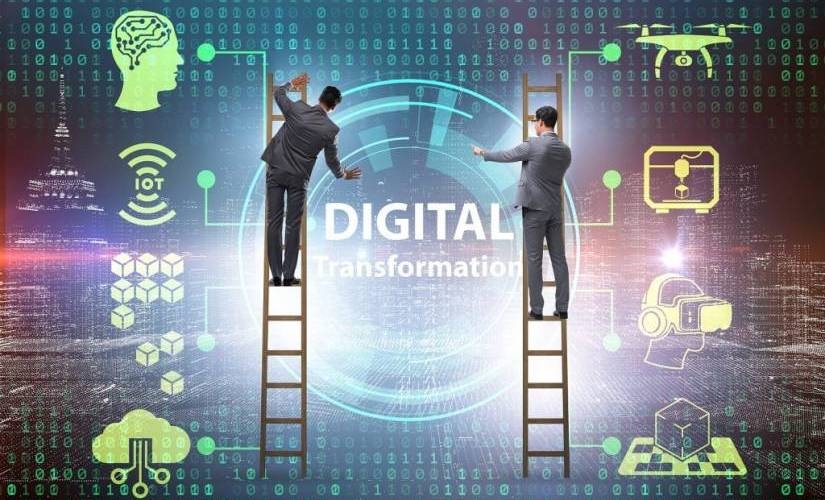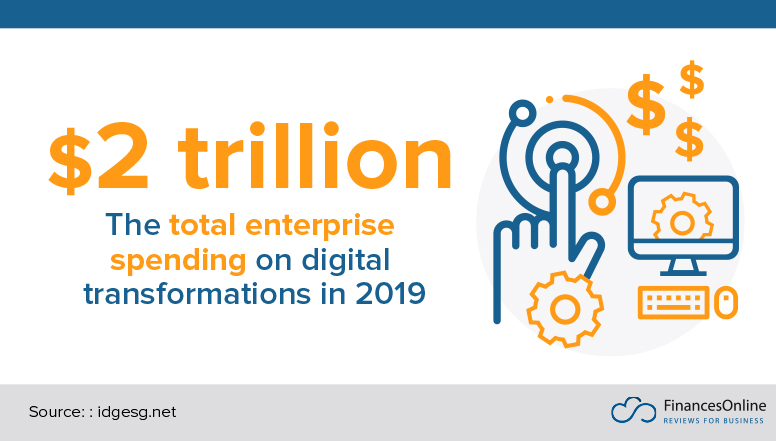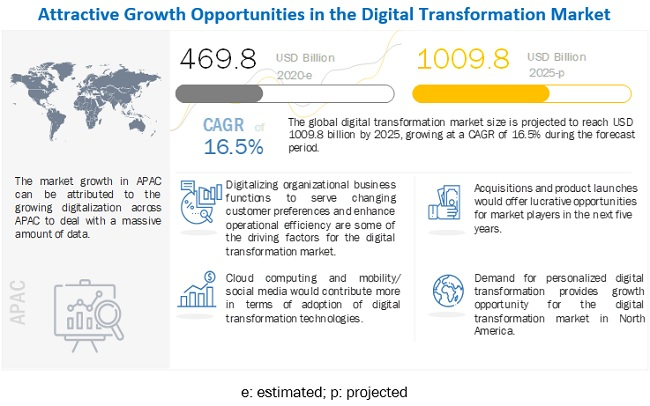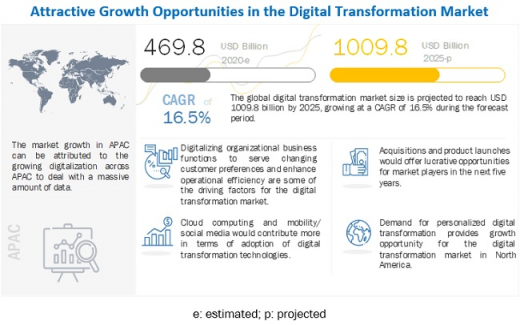How the Pandemic has Given a Push to a More Digitally Equipped Business
How the Pandemic has Given a Push to a More Digitally Equipped Business

If there were any lingering doubts about the importance of digitization across the business sector, the pandemic has slapped and silenced them. The virus has also disrupted people’s normal lives; it has drastically changed the way we eat, shop, transport, and communicate. As consumer’s needs and preferences keep evolving due to the pandemic, brands should focus on customer’s expectations; after all, they are the ones who help them to thrive in the future.
The Pandemic has Given a Push to a More Digitally Equipped Business.
No, digital transformation is not a new concept. Before the pandemic, it was already there, but the current situation has compelled business owners to transform their business model. Otherwise, they will lose a huge chunk of revenue and customers. The accelerating digitization process helps brands to deliver products and services rapidly with a top-notch customer experience.

Image Credit: financesonline dot com
Students are getting habitual of online learning, people are ordering products online, and due to the pandemic, people have understood the importance of modern technology. Moreover, it also benefits businesses as they can stay in touch with customers without any limitations. Today, it is significant for brands to have a website, app, presence on social media because these all keep business afloat, automate operations, and reduce operational cost.
Keeping in mind the ongoing situation, businesses will become more reliant on digital technologies, and the brutal fact is that digital transformation will be the new deciding factor in whether they survive amid tough times.
Why Go Digital in Business?
No one had anticipated that the year 2020 would be dominated by Zoom, Doordash, Postmates, and Zomato. Yes, for a while, it felt like we were all living virtual lives where smartphones and the Internet have become mainstream. Be it attending online meetings, ordering food, or medicine, digital technologies have made it possible.
2020 is the year of full uncertainty for all of us. With the corona cases surge and global lockdown scenario, businesses across all sectors are facing strange challenges. As a result, they are searching for new ways to deal with this “new normal.”
Large-scale corporations and small-scale businesses are also leveraging modern technology tools to boost profitability and customer base.
In fact, Singapore’s economic survey has found that small businesses who opt for digital tools increased their revenue by 25% and their productivity by 14%.
Digital technologies have the capabilities to deal with economic crises. It generates new sales opportunities, reduces operational costs, and streamlines workflow. Businesses that fail to adopt a digital strategy in their business could not stay afloat. Irrespective of business size and type, going digital is the only way it reduces the reliance on the workforce.
Restaurants are going digital and investing in a platform where people order food online. Even transportation businesses harnessing the power of digital tools and thinking to invest in advanced ride-sharing apps because even after the pandemic ends, people prefer private mode of transportation. Hence, it would not be wrong to say that going digital will enhance the business’s competitiveness and give birth to automatic business culture.
“Essential Digitization” in Businesses at an Incredible Velocity
As lockdown restrictions are imposed across the globe, we enter the new world. That can be described as a” new normal,” where people accomplish their regular needs using apps and websites and avoid visiting physical stores to stay safe healthy. Nonetheless, the pandemic has had an adverse impact on the global economy, leading to a sudden drop in spending and changing the way people consume goods and services.
On the other hand, businesses are going digital and investing in platforms where their customers access products and services at their fingertips. For instance, more than 70% of people order food and groceries online as these apps ensure contactless delivery and contactless payment. Brands are undergoing rapid digital transformation and leveraging new technologies to ensure trouble-free order and payment process.
Before the pandemic, it was a luxury, but now it is essential because customer’s preferences keep evolving with time, as do businesses too. From digital ordering to remote work to maintaining an online presence to the adoption of cloud technology, investing in digital tools can give you a competitive advantage and keep you one step ahead in the crowded market.
Gone are the days when brands had limited sales opportunities; now, companies have plenty of ways to generate leads while spending less. Using creative digital solutions helps you revamp the process, improve customer service and promote agility in business. There are some obvious reasons why you should operate a digitally equipped business as it offers perks like:
- Reduce operational cost
- Global reach
- Enhance customer service
- Increase conversions
- Stay ahead in the competitive business curve
Due to the pandemic, companies of all sizes are practically flung into the era of digitization; since work can be done regardless of time and place, products can be ordered without any location restriction, payment can be made using any mode. Overall, brands that opt for digital strategy in their business operations can have advantages in this challenging situation.
Adoption of Digital Transformation by Entrepreneurs

Image Credit: marketsandmarkets dot com
Earlier, companies were not that conscious about adopting emerging technology, but now you can see faster and more widespread adoption of modern technologies. From eCommerce to small business owners, every business owner is leveraging technology due to the adverse impact caused by the pandemic, and this trend will last even after the pandemic ends.
Some technologies address the direct needs of the “new normal.” for instance, eCommerce business owners implementing multiple payment options since the “contactless payment” approach has been introduced. At the same time, retailers such as small restaurants and grocery owners opt for mobile-driven solutions where their customers can order products and get them delivered in a minimum time. These contain digital currencies, mobility solutions, AR/VR technologies, and communication tools like chatbots that enhance customer service.
Moreover, technologies like cloud and microservices, chatbots, big data, etc., make easy connectivity with consumers and ensure online transactions. Let’s take a look at how digital tools keep people and businesses afloat amid the outbreak.
Remote work:
Before the pandemic, only 30% of US employees worked remotely. Today, more than 70% of employees working remotely, and collaborative tools such as Skype, Zoom, Stack, etc., help employers and employees in terms of productivity and connectivity.
Omnichannel Commerce:
As retailers, shop owners, and restaurants are advised to close their operations; consumers move to online platforms to fulfill their regular needs. Especially, online food and grocery delivery services, such as Instacart, Doordash have been in high demand.
Customers can now order food and essential products online, pay online and get them delivered at their location by following all the safety measures. In this way, businesses are offering a digital experience to customers through the online delivery concept.
Online Content Consumption:
Since people are confined inside their homes, they are looking for online entertainment services. More than 51% of internet users globally enjoy shows online on sites such as Amazon Prime and Netflix.
You might get wonder, but Netflix also saw 16 million new subscribers in the first three months of lockdown. Moreover, theaters are closed; many film studios have decided to release their shows and movies on these platforms to engage more audiences.
No doubt, the global economy is facing a huge downturn but a myriad of digital solutions directly or indirectly helping businesses to stay afloat and keep their customers engaged.
Digital Revolution to Last Forever?
The most obvious change has been the swing to effectively online ordering models. It has been tough as retailers, and many brands have moved online and made all their interactions digital with customers using social media websites or chatbots.
GenX and Y are still reluctant about this concept, but GenZ welcomes this approach as they are friendly mobile-driven solutions. More than 57% of consumers will continue to adopt this approach even after the pandemic hits. Be it online banking transactions, online ordering, or digital payments; digitization is here to stay.
More brands are working towards a digital future, and the pandemic also created demonstrated a way to make it work. Digitization in business is essential and helps your business thrive beyond the limits; even if you run an offline business, get started with social media and app solutions to ensure business continuity.
With the continued development of emerging technologies and the pandemic, the future of the global economy will have a massive impact on digitalization.
Cutting-edge technologies such as blockchain, IoT, Artificial Intelligence, Machine learning, cloud computing, robots, etc., change the global economy and help businesses thrive. Small businesses are a cornerstone of the economic development of any nation, and these technologies will make your business digital-native.
Image Credits: provided by the author; thank you!
The post How the Pandemic has Given a Push to a More Digitally Equipped Business appeared first on ReadWrite.
(46)


